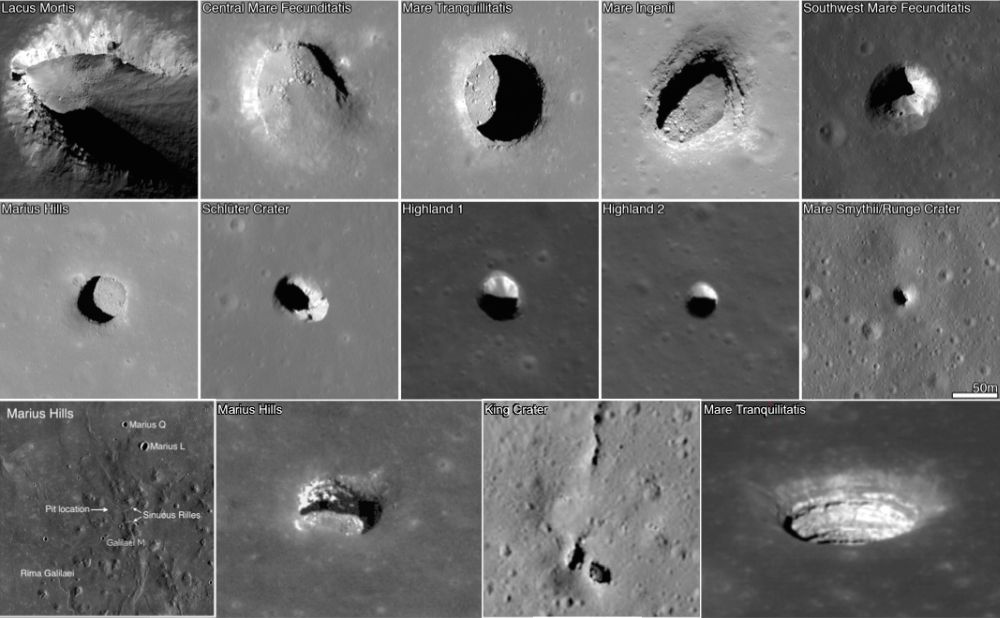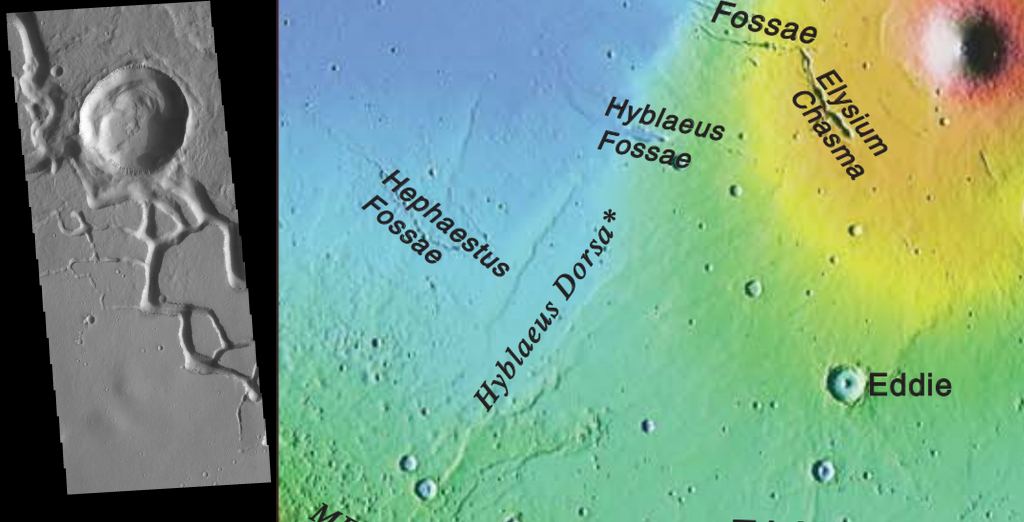Lava tubes and chambers attract a lot of attention as potential sites for bases on the Moon and Mars. They provide protection from radiation, from temperature swings, and even from meteorites. They beg to be explored.
Volcanoes are just the most obvious and the largest manifestations of a planet’s volcanic activity. In reality, most of what creates a volcano happens deep underground. That’s true of Earth and Mars.
A volcano occurs when magma, ash, and gases erupt from a magma chamber beneath the surface of a planet. (Or moon, in Io’s case.) You can’t miss the volcano itself, which rise well above the surface and spew ash high into the atmosphere. But what’s hidden is what goes on underground.
Volcanic activity can move an enormous amount of liquid rock, pushing it around and forming an interconnected network of lava tubes and chambers. The lava can drain away, leaving an empty cave or tube. Sometimes the roof collapses, forming what’s known as a skylight. There are many of them on the Moon, where they’ve attracted everyone’s attention. The skylight can provide easy access to what could be underground refuges in some cases.

Mars has them too, and NASA Mars Reconnaissance Orbiter (MRO) captured an image of one with its HiRISE camera.
It’s in the Hephaestus Fossae Region in Utopia Planitia on Mars. Hephaestus Fossae is a system of channels and troughs. It’s connected to the nearby Elysium volcanic center, and melt water from a nearby impact may have helped create it, too. There’s some uncertainty.

Lava tubes could provide a solution to one of the obstacles confronting human exploration of Mars. The average surface radiation on Mars is 40 to 50 times stronger than on Earth, but thick overhead rock could provide protection. Mars also experiences wild temperature swings from 20 Celsius down to -152 Celsius. A temperature-controlled habitat buffered by all the overhead rock could protect astronauts and equipment from those swings.
There are all kinds of ideas how to explore these types of features. China is developing plans to explore lunar lava tubes, and even build a base in one. So by the time we make it to Mars, we’ll already have our feet wet and will be better equipped to use lava tubes to our advantage.
Currently, Mars exploration focuses on one big question: Did Mars ever support life? So our missions head to places where we might find the evidence. That usually means sediments that could preserve the evidence we desire. MSL Curiosity is at Gale Crater, Perserverance is at Jezero Crater, and the ESA’s upcoming Rosalind Franklin rover will land at Oxia Planum.
None of our missions are aimed at exploring lava tubes. But one day we will explore them, and this one in Hephaestus Fossae could be a good place to start.
It could end up being a stable home away from home.

